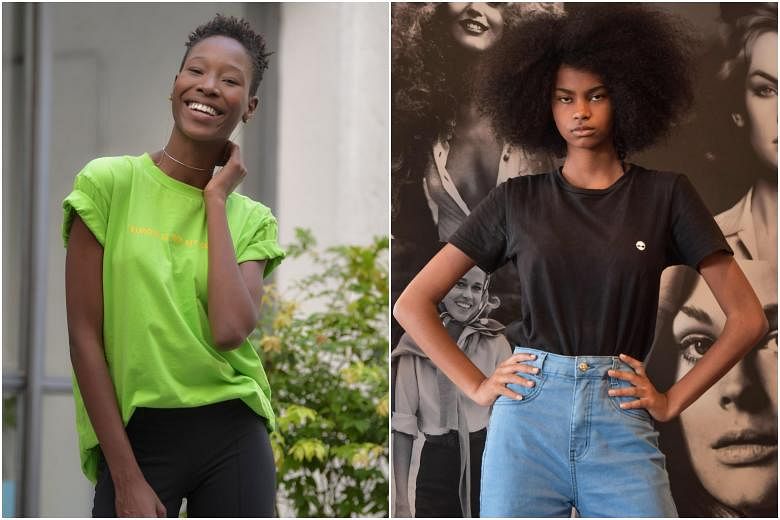SAO PAULO • Afro-Brazilian models Shirley Pitta and Gloria Maria Fonseca Siqueira had dreamt of the catwalk since they were little girls, but in a Brazilian fashion world much whiter than the country itself, it remained a faraway fantasy until recently.
In a sign of changing times in Brazil and elsewhere, they saw their dreams come true at this year's Sao Paulo Fashion Week (SPFW).
SPFW, one of the industry's premier events, this year implemented a requirement for at least half of every label's models to be people of colour, in a move hailed by black and indigenous rights activists.
"It took me a long time to see myself as a beautiful person, a person who exists. Because on television, I always saw things I wasn't," says Pitta, 21, whose portfolio includes work for leading fashion magazines Vogue, Elle and Marie Claire.
She calls herself a "black favela girl from the north-east", referring to the slums of Brazil's most impoverished region.
Her modern-day Cinderella story has captured as much attention as her striking appearance.
Before she was discovered in 2018, she spent her days selling grilled kebabs outside the zoo in her home town, Salvador.
With her short hair, high cheekbones and piercing gaze, Pitta now exudes a confidence she says does not come as easily as it might appear.
"When I was little, I used to wrap towels around my head", ashamed of the way her hair looked, she says.
"It's important to talk about these things because our children won't have long, straight hair when they grow up, and they need to know that's not a problem. It's something beautiful."
In Brazil, the last country in the Americas to abolish slavery - in 1888 - around 55 per cent of the population identifies as black or mixed-race.
But although whites earn 74 per cent more than people of colour on average, a national debate on racial inequality has only begun relatively recently.
The conversation was perhaps delayed by a long-held idea among the Brazilian elite that the country was a "racial democracy" protected from racism by the fact that most people have some black or indigenous ancestry.
So it was a sign of radical change when SPFW, which was held remotely this year because of the coronavirus pandemic, required more inclusive casting.
That opened the doors to Pitta and 17-year-old Siqueira.
Tall and thin, with an exuberant afro, Siqueira took a long time to realise she could have a future in the fashion world, despite people telling her she had potential as a model.
"I'll never make it," she remembers thinking when she saw the model catalogue at Ford Models, one of the industry's top agencies, as a 15-year-old.
Now, she gives interviews from the agency's headquarters in Sao Paulo. "I wasn't confident. I thought I wasn't beautiful enough," she says. "But now I know I can travel the world through this."
The youngest of seven children from a lower-middle-class family, Siqueira grew up admiring models like Naomi Campbell and Adut Akech. She sees Brazil, home to supermodel Gisele Bundchen, as a country of diversity, something she would like to see it embrace for its positive aspects.
"Sometimes, people feel like they're less because they're different and they try to fit a standard that isn't them. They don't realise that being different is unique," she says.
Pitta sees the industry at a turning point. "We're breaking through. I'm not going to sit there thinking about the past. We're moving forward," she says.
AGENCE FRANCE-PRESSE

